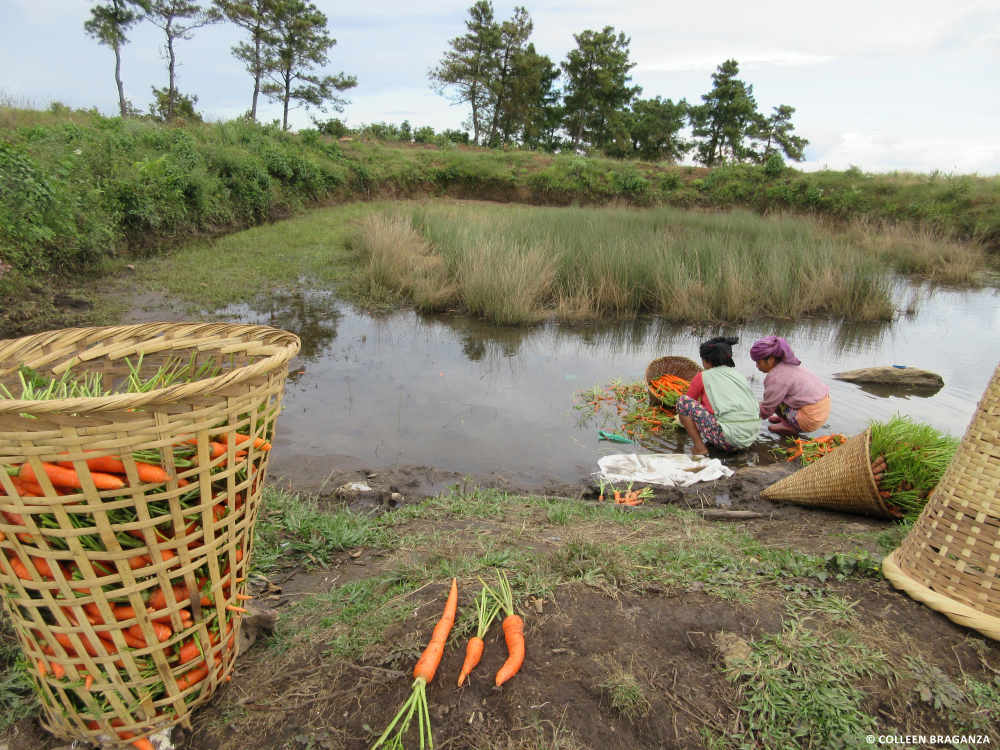
when Horror Yearbook – Monster Tree holds a powerful place in the collective memory of the Khasi people. High on a hilltop overlooking the plateau of Shillong, a massive crater marks the spot where locals believe this monstrous tree once stood. The crater is surrounded by fields of carrots, cauliflower, cabbage, and kohlrabi that thrive under the cool sky of Meghalaya. This site carries both mystery and history, making it more than just a landscape. It is a story passed down through generations, where faith, fear, and folklore intertwine. The Monster Tree legend has become a cultural anchor, linking the modern Khasi community with their ancestral beliefs. For visitors, the peak offers not only breathtaking scenery but also a journey through a myth that speaks of divine punishment, human struggle, and a battle for light itself. This narrative has endured centuries and still casts a shadow over the land today.
The Monster Tree stands at the center of a gripping Khasi myth. Long ago, Khasis believed this tree grew so tall and wide that its branches blocked all sunlight from reaching the earth. This darkness spread fear and desperation. In the Khasi belief system, trees hold a sacred place just like in many religions across the world. Christianity has the tree of knowledge, Buddhism has the Bodhi tree, and Hinduism has Kalpavriksha. Similarly, in Khasi mythology, two trees define the relationship between heaven and earth. One once stood at Lum Sohpet Bneng, serving as a bridge between divine and human realms. When humans angered God, that bridge was cut and they were trapped on earth. As punishment, Monster Tree was planted on Lum Diengiei peak, growing so vast that it swallowed the sun. This myth shaped how people understood their place in the world.
The story of human defiance against the Monster Tree is one of courage and despair. Terrified by the endless darkness, people gathered in desperation to bring light back to their world. They hacked at its massive trunk from dawn to dusk. Yet the Monster Tree healed itself every night, mocking their efforts. Their tools were powerless against the living shadow. It was then a small bird appeared, offering a secret in exchange for food from their fields. Desperate, the people agreed to its terms. With the knowledge shared by the bird, they finally struck the heart of the Monster Tree. The tree fell and light returned to the world. This victory was celebrated not as mere triumph but as survival. Even now, the crater left behind is considered the place where the roots of this mighty being once lay.
“Read more: NFL Fans Lose It as Jaguars’ Travis Hunter Lights Up Week 7!”
The site where the Monster Tree once stood remains an important place in Khasi culture. Furthermore, the crater on Diengiei peak holds both symbolic and spiritual significance. Locals view it as a reminder of their ancestors’ struggle against darkness. Today the area is surrounded by lush fields that thrive in the sunlight that their ancestors fought to reclaim. Pilgrims and visitors alike come to this site to reflect and connect with a legend that feels alive in the land. Meanwhile, each February, many Khasi people gather at nearby sacred sites to pray for peace and prosperity. This connection between faith and geography has kept the story of the Monster Tree vibrant. Ultimately, its myth is not buried in the past but lives on through rituals, songs, and oral storytelling that echo across the hills of Meghalaya.
Visiting the Monster Tree crater is more than a hike. It is a journey through time and belief. Diengiei peak can be reached after a comfortable uphill walk from the quiet village of Mawlaingut, around fifty kilometers from Shillong. The landscape bursts with rows of vegetables, misty skies, and locals wearing traditional shawls as they work the land. On cloudy days furthermore the light becomes soft and golden, adding a mystical glow to the fields. Visitors often find locals washing freshly pulled carrots in the rainwater collected at the crater, a simple yet mesmerizing scene. The peak stands as both a natural wonder and a cultural treasure. Every gust of wind and every ray of sunlight seems to whisper the story of the Monster Tree, reminding all who visit that legends do not live only in books. They live in the land itself.
This article is sourced from colleenbraganza and for more details you can read at horroryearbook
Writer: Sarah Azhari
Editor: Anisa